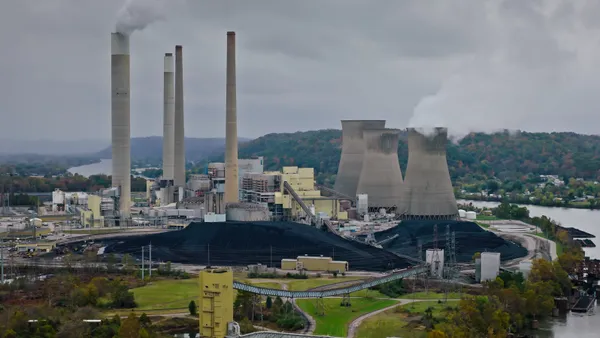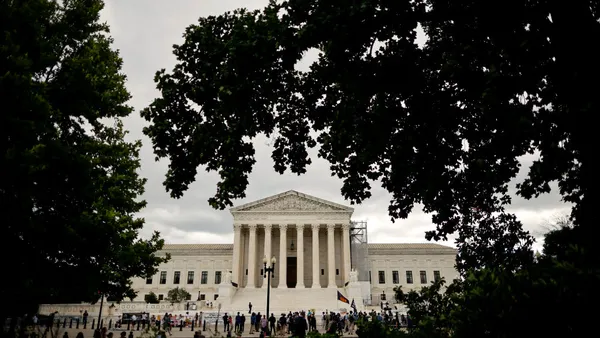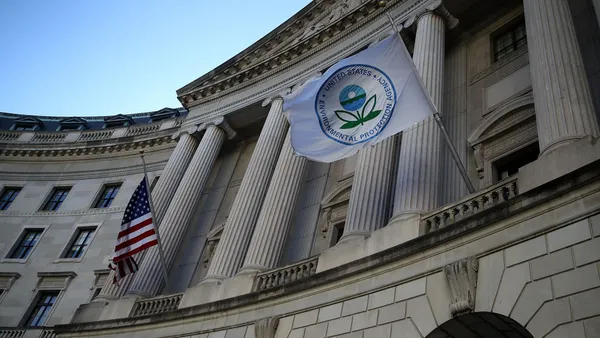Dive Brief:
- By about a two-thirds margin, voters in the Lone Star State on Tuesday approved a constitutional amendment authorizing a new $10 billion Texas Energy Fund to provide low-interest loans to build gas-fired power plants, develop microgrids and modernize portions of the state’s electric grid.
- Supporters of the fund say new power generation is needed to maintain electric reliability and support the state’s expanding economy. There are about 1,000 people a day moving into the state and “growing infrastructure is essential,” the Texas Oil & Gas Association, or TXOGA, said in a statement following the vote.
- Opponents of Proposition 7 say it amounts to a giveaway to fossil fuel power plant developers at a time when Texas should be investing more in energy efficiency. There are also concerns the measure leaves the Public Utility Commission of Texas to make difficult judgments about the viability of loans.
Dive Insight:
The Texas Senate in April approved a $10 billion “energy insurance program” that aimed to improve grid reliability through development of 10,000 MW of new gas-fired generation. That measure did not find support in the House, however, leading to the proposal voters approved yesterday.
The Texas Energy Fund will be administered by the PUCT, with a total pot of $7.2 billion available to support any new construction or upgrade that results in at least 100 MW of dispatchable generation coming online and interconnecting to the Electric Reliability Council of Texas grid before June 1, 2029.
Another $1.8 billion will support the development of microgrids and backup power for critical facilities across the state, and $1 billion will go to grid modernization, weatherization and other efforts in the non-ERCOT portions of Texas.
Texans approved 13 of 14 constitutional amendments on Tuesday, including billions in funding for broadband and water infrastructure. The Texas Energy Fund will “strengthen the reliability of our electric grid by ensuring it performs no matter the weather as well as increase the supply of electricity by encouraging additional generation,” TXOGA said.
Texas Sen. Charles Schwertner, a Republican, who proposed the constitutional amendment, said the fund “will strengthen electric generation facilities by modernizing and enhancing their resilience to continue operations, even in the face of extreme weather conditions.”
PUCT staff has been working since the summer to prepare for implementation of the energy fund, according to commission Executive Director Thomas Gleeson.
“With voter approval of the fund, we will push forward developing the program and design transparent processes to ensure the administration of the [Texas Energy Fund] is timely, fiscally responsible, and effective,” he said. The fund “is another vital tool to ensure the reliability and resiliency of the Texas electric grid.”
Texas has been working to bolster its electric grid since Winter Storm Uri in 2021 resulted in widespread blackouts and led to the death of almost 250 people in the state. Regulators spent much of 2022 considering market enhancements and incentives for power generation facilities.
The Texas Energy Fund is a “very significant step” in developing new power plants, according to Vinson & Elkins counsel Winston Skinner.
The PUCT “will have significant discretion in prioritizing projects and setting performance standards developers must meet to receive money for these new facilities,” Skinner said.
But not everyone has confidence in the state’s regulators to oversee the fund.
Stoic Energy President Doug Lewin, who writes the closely-watched “Texas Energy and Power Newsletter,” said he had planned on voting against creation of the energy fund “mostly because I don’t think the Public Utility Commission of Texas can become a bank the way Prop. 7 envisions. The PUC has no expertise gauging default risk.”
The state comptroller’s office recently added five companies to an updated list of institutions banned from doing business with the state because they “boycott the oil and gas industry.”
Lamar Johnson contributed to this report.














